

|
|
|
|
|
|
The UWYO soils team competed in the Region 7 (WA, OR, ID, UT, CO, WY, MT) contest and will advance to the Nationals in spring 2020 in Ohio.
Team Results: 1st Overall Team & 1st in Group Judging
Individual Results: Noah Chesier (4th), Matthew Ratterman, Madelyn Haeg (12th), Austin Jacobson (2nd), Taylor Britt (5th), Megan Anderson (11th), Benjamin Tracy, and Tori Strom
The team is led by Ph.D. student, Chelsea Duball.
Ecosystem Science and Management faculty member, Kevin Wilcox, brought six undergraduate students and two graduate students first to Fort Keogh Livestock and Range Research Laboratory near Miles City, MT, and then to Thunder Basin near Bill, WY in early October, 2019, to learn about and assist in a drought and grazing experiment. Student got to meet USDA scientists involved in the project and gain data collection experience within a scientific field study.
The experiment simulates two year droughts of various magnitudes, ranging from mild to extreme, via strips of corrugated plastic that are suspended over 2 m x 2 m plots. A grazing intensity manipulation is crossed with drought treatments where cattle are allowed to graze plots at different intensities. The goal of the study is to assess how various grazing management strategies might maximize recovery of rangelands after extreme multi-year droughts.
One of the key factors contributing to a rangeland’s ability to recover after drought is the amount of root growth that occurs under different grazing patterns. However, measuring root growth is tricky. To do it, you must drill holes in the soil in early spring, sieve out all existing roots from the soil you removed, install mesh root ingrowth cores filled with the now root-free soil, then remove those cores in the fall after roots have grown into the bags.
It takes a lot of time and careful effort to extract the cores without damaging the sample. The team learned how to remove the root ingrowth cores and then expertly removed two cores each in 54 experimental plots at each site! UW is lucky to have such wonderful, dedicated, and skilled students.

Students collecting ingrowth core samples at the Drought by Grazing Experimental Site in Thunder Basin National Grassland, Wyoming
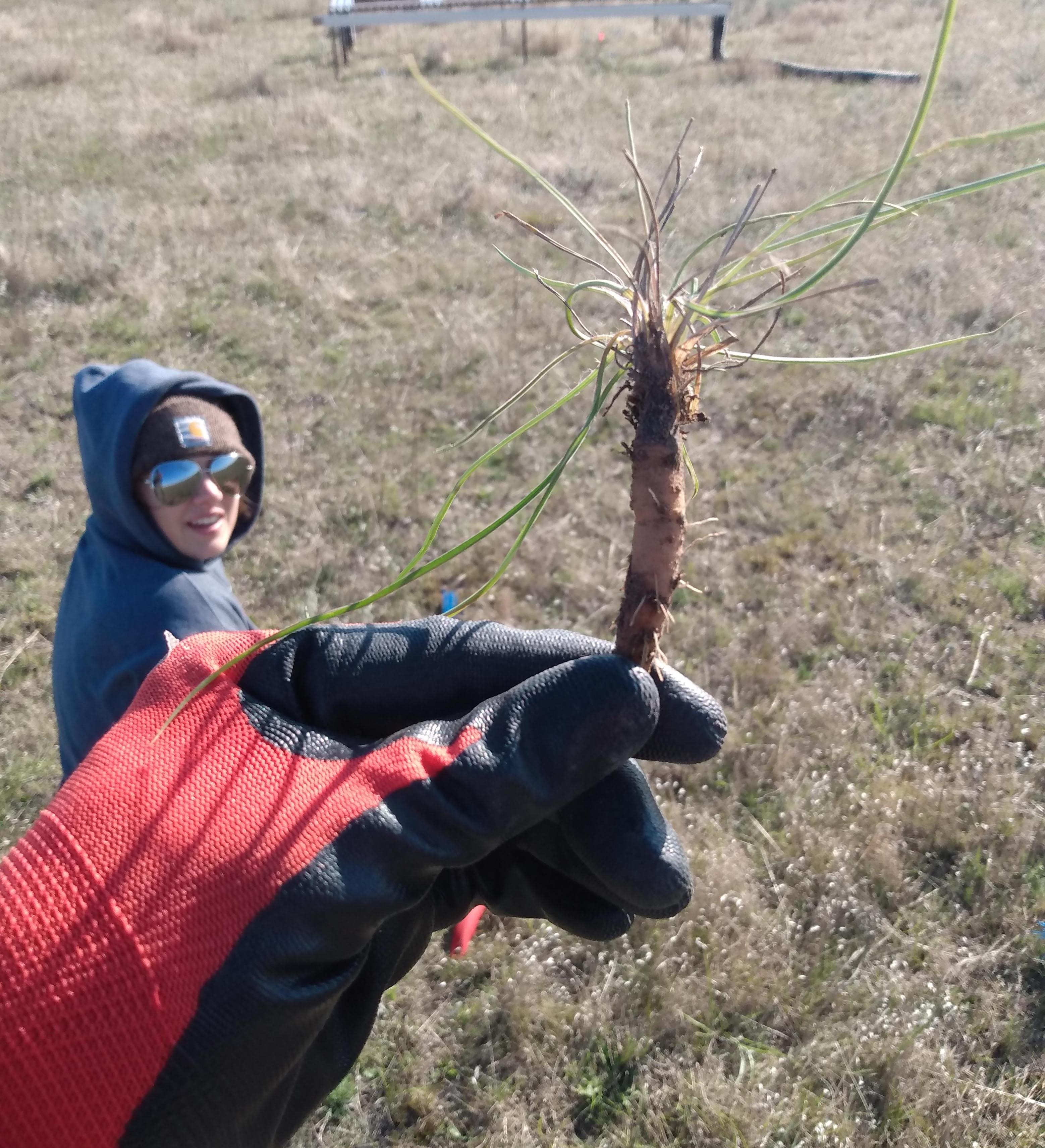
Yellow Salisfy taproot (Ashley Dupius in background)
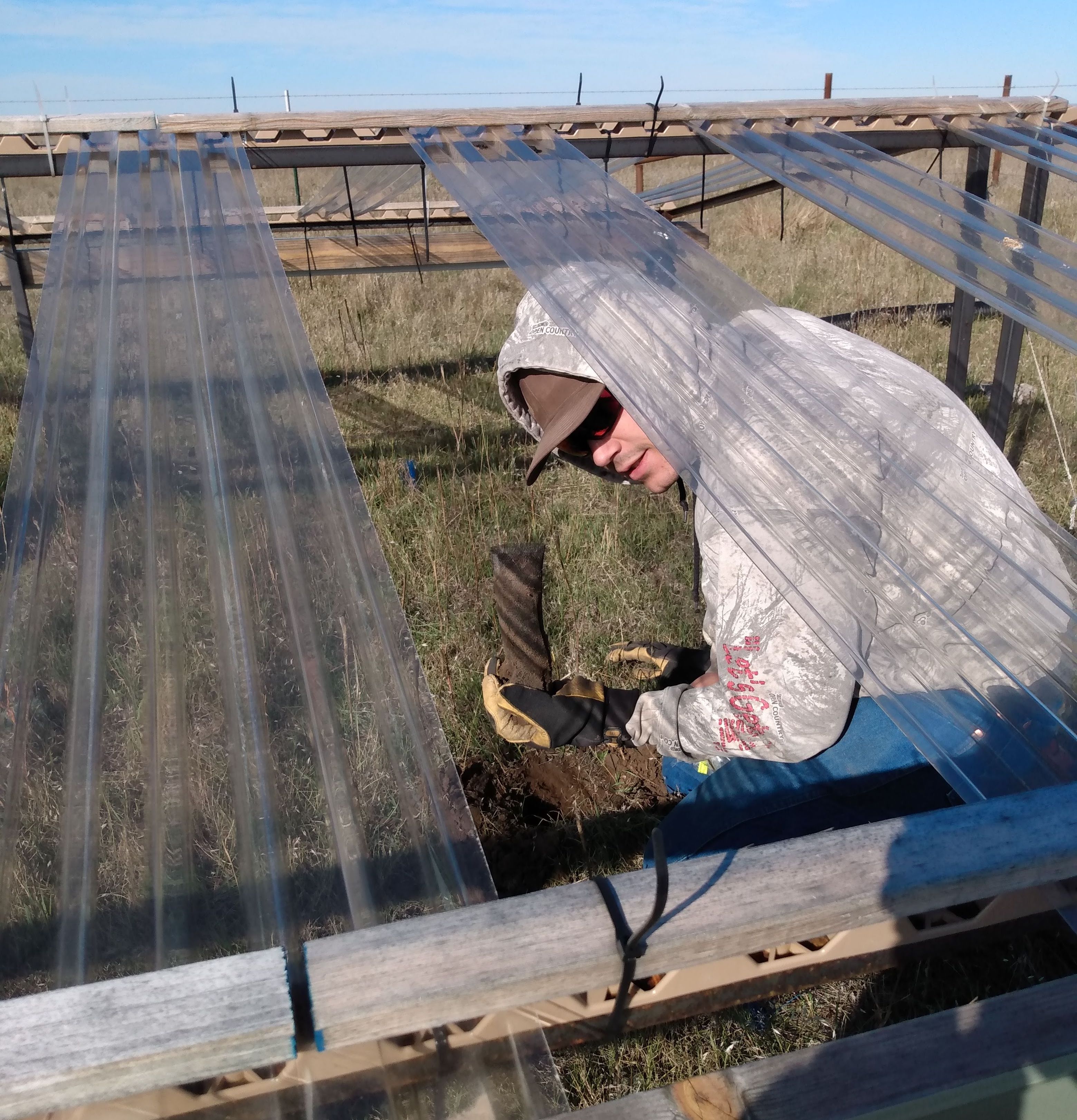
Lucas Mirassou collecting soil ingrowth cores
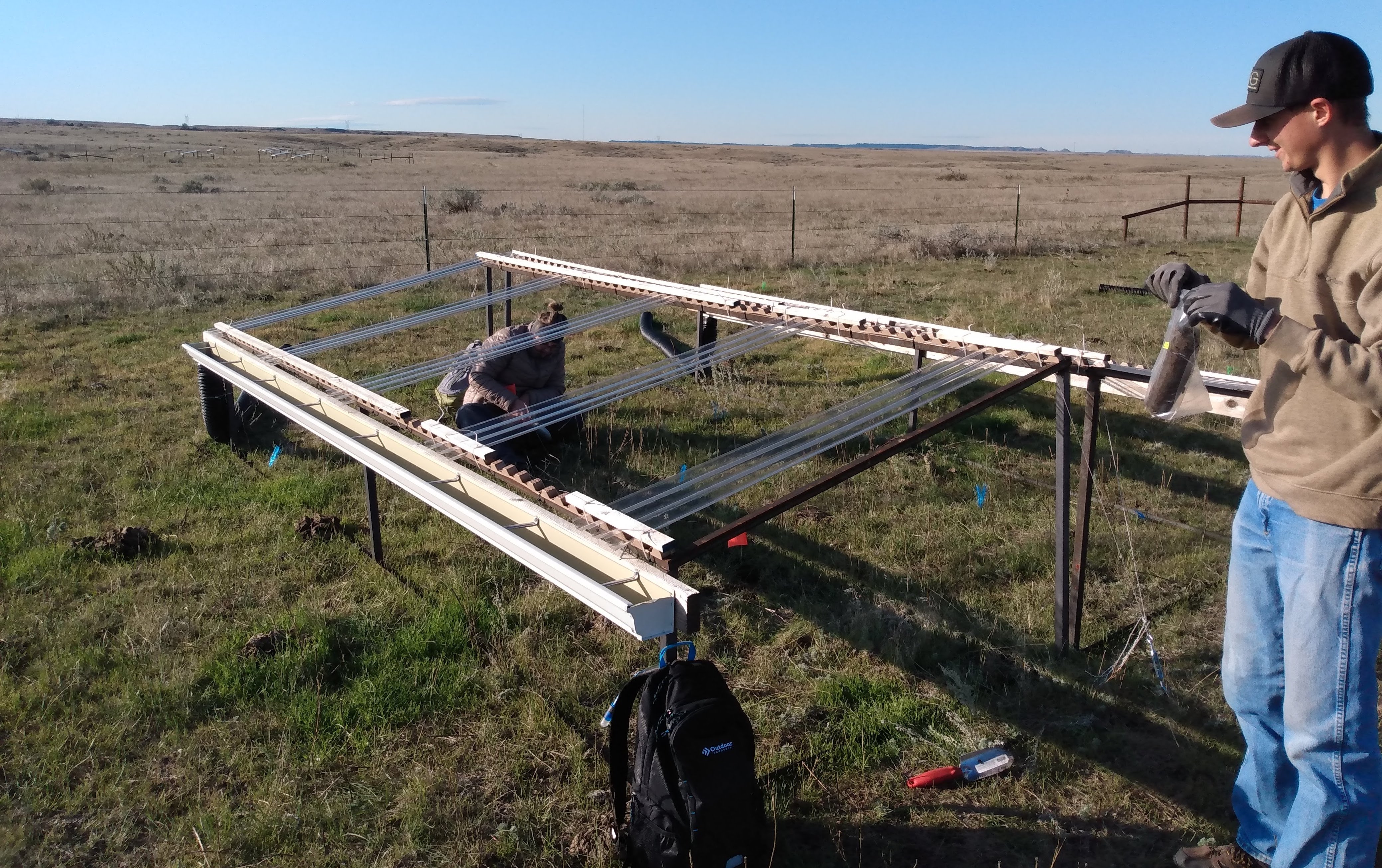
Aaron Kersh sealing a core sample
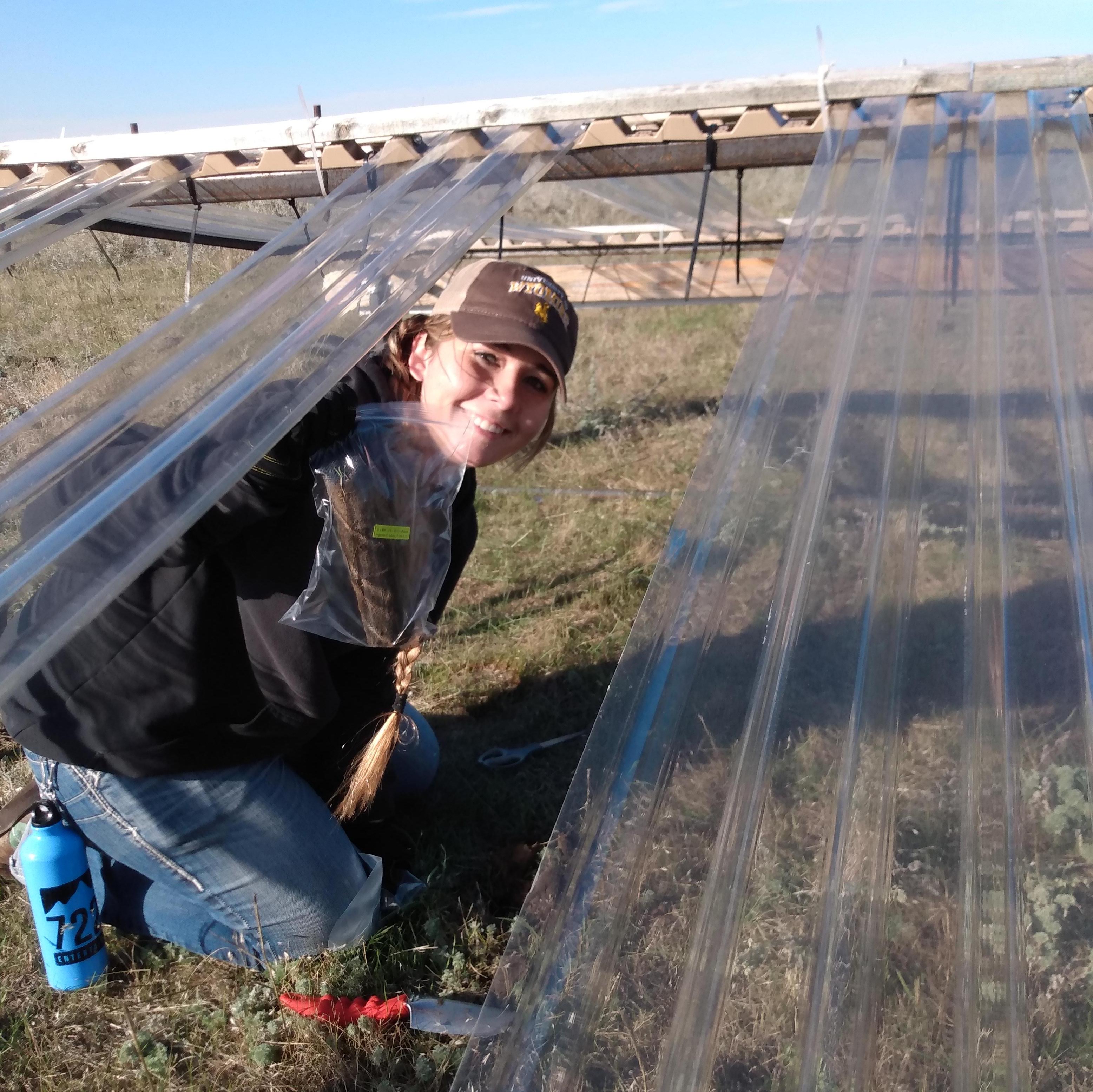
Megan Lovitt showing off the core she collected
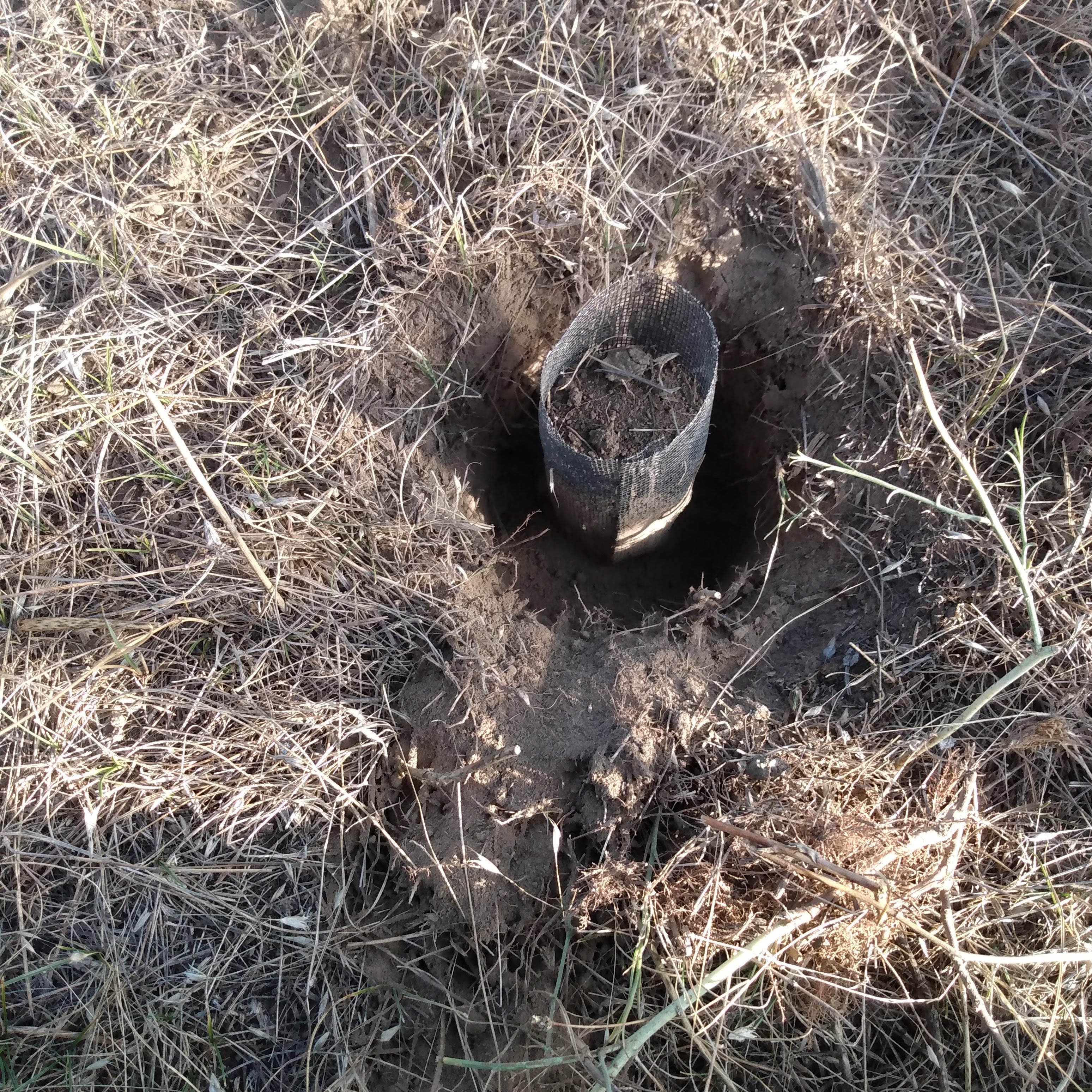
Root ingrowth core